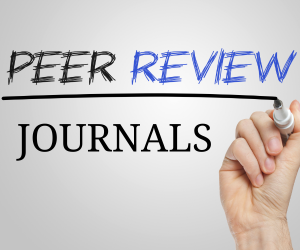PAS VERS UNE PRATIQUE DE L’ANESTHESIE DURABLE (ANESTHESIE VERTE) DANS LES PAYS A FAIBLES REVENUS : EXPERIENCE DU CENTRE MEDICAL DIAMANT DE LUBUMBASHI EN RD CONGO.
Keywords:
Anesthesia, Sustainable, Diamond Medical Center, DR Congo.Abstract
Objective: this work aims to deliver the experience of a private structure in the practice of sustainable anesthesia while drawing inspiration from the European model.
Methodology: This is a descriptive pilot study in the form of a three-day survey (from November 23 to 25, 2022) comparing our practice to the standards and recommendations set by the European consensus on the sustainable practice of anesthesia. The independent variables recognized as parameters of long-lasting anesthesia were: the average volume of anesthetic gas used per patient, the Benchmark of anesthetic gases per surgery, the types of anesthetic gases, the type of circuit-machine, the other alternatives to the general anesthesia, air cleaning after gas use, gas analyzer as well as carbon monitoring in the operating room with a carbon neutralization system. A simple questionnaire developed on the basis of recommendations from the European campaign for the practice of sustainable anesthesia as well as eco-design in anesthesia.
Data processing and analysis: for this simple descriptive study, the Excel software allowed us to process and identify the means and standard deviations.
Results: loco regional anesthesia is the most practiced at the CMDL, the minimum alveolar concentrations are used according to the standards isoflurane and sevoflurane are the gases used without association of nitrous oxide the closed circuit is used with a cleaning system of air and a gas analyzer. On the other hand, the system for measuring carbon as well as the techniques for its neutralization are not yet
Conclusion: The practice of sustainable anesthesia even in countries with limited resources is possible without many constraints. This work shows that with a little will we can reduce the effects of anesthetic gas pollution and sustainably join the fight against global warming.
References
D’Aranda E, Derkenne C, Bonnet L, Paries M. Aspects pratiques du développement durable en santé. Prat Anesth Reanim 2021 ;25(4) :181-9.
Commission mondiale des Nations unies pour l’environnement et le développement. Notre avenir à tous. Saint-Jeansur-Richelileu (Canada) : Éditions Lambda ; 1987.
Durées de vie calculées à partir de JPL http://jpldataeval.jpl.nasa.gov
GWP 100 de Sulbaek Andersen 2012 http://dx.doi.org/10.1021/jp2077598
Pour la pratique anesthésique durable en Europe : https://noharmeurope.org/issues/europe/fostering-low-carbonhealthcare-europe-euki-anaesthetic-gasses-project.
Manuel de certification des établissements de santé V2010. Haute Autorité de Santé 2011.
Réalisation d’un bilan des émissions de gaz à effet de serre. Agence de l’Environnement et de la Maîtrise de l’Energie 2013.
Sherman JD, Ryan S. Ecological responsibility in anesthesia practice. International Anesthesiology Clinics. 2010 ;48 :139-51.
McGain F. White S, Mossenson S, Kayak E, Story D. A survey of anesthesiologists’ views of operating room recycling. Anesth Analg 2012;114.
Nilsson R et al. Health risks and occupational exposure to volatile anaesthetics – a review with a systematic approach. JCN. 2005; 14:173-86.
Vollmer MK, Rhee TS, Rigby M, Hofstetter D, Hill M, Schoenenberger F, Reimann S. Modern inhalation anesthetics: Potent greenhouse gases in the global atmosphere. Geophys. Res. Lett. 2015 ;42 :1606–11.
Guthinger G, Guerquin L, Zafiriou Y, Briot C, Chapuis C, Bosson JL, et al. Impact économique et écologique d’une réduction du débit gaz frais sur la consommation d’halogénés. Ann Fr Anesth Réanimation. 2014 ;33 : A410.
Yamauchi S, Nishikawa K, Tokue A, Ishizeki J, Kadoi Y, Saito S. Removal of sevoflurane and nitrous oxide from waste anesthetic gases by using Anesclean, the system for treating waste anesthetic gases. Masui. 2010; 59:930-4.
Laverdure F, Gaudin A, Bourgain JL. Impact of the decrease of nitrous oxide use on the consumption of halogenated agents. Ann Fr Anesth Reanim. 2013 ;3211 :766-71.
Graham AM, Myles PS, Leslie K, Chan MT, Paech MJ, Peyton P, El Dawlatly AA. A cost-benefit analysis of the ENIGMA trial. Anesthesiology. 2011 ; 115 :265-72.
Ishizawa Y. Special article: general anesthetic gases and the global environment. Anesth Analg. 2011; 112:213-7.
Downloads
Published
Issue
Section
License

This work is licensed under a Creative Commons Attribution 4.0 International License.
Licensing
Ninety Nine Publication publishes articles under the Creative Commons Attribution 4.0 International License (CC BY 4.0). This licensing allows for any use of the work, provided the original author(s) and source are credited, thereby facilitating the free exchange and use of research for the advancement of knowledge.
Detailed Licensing Terms
Attribution (BY): Users must give appropriate credit, provide a link to the license, and indicate if changes were made. Users may do so in any reasonable manner, but not in any way that suggests the licensor endorses them or their use.
No Additional Restrictions: Users may not apply legal terms or technological measures that legally restrict others from doing anything the license permits.





